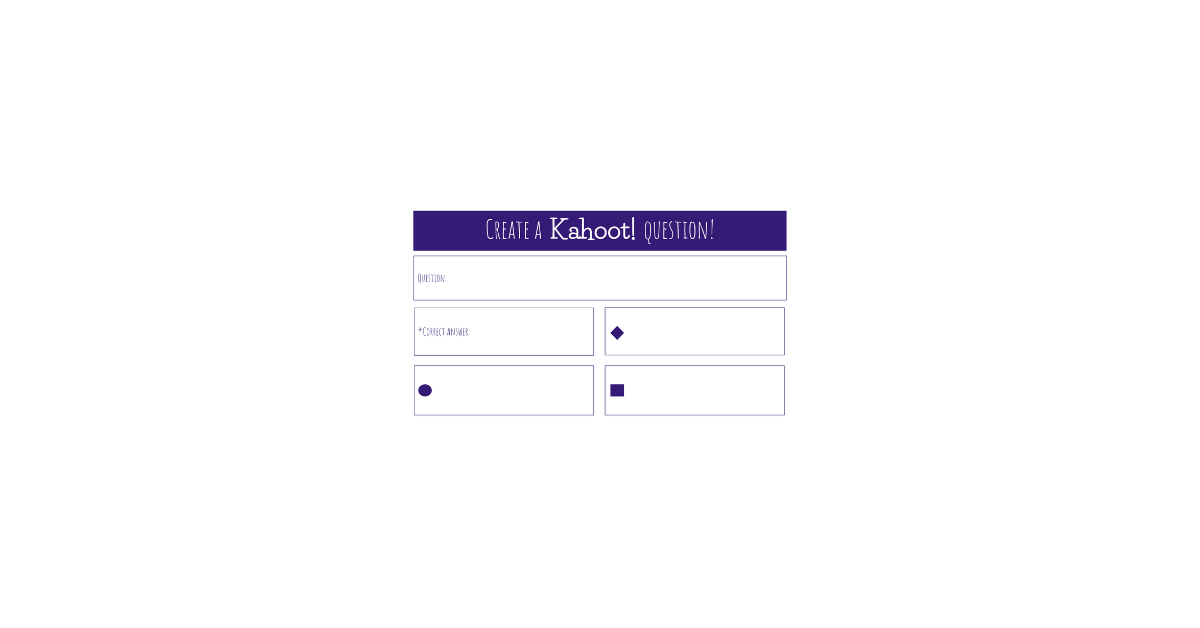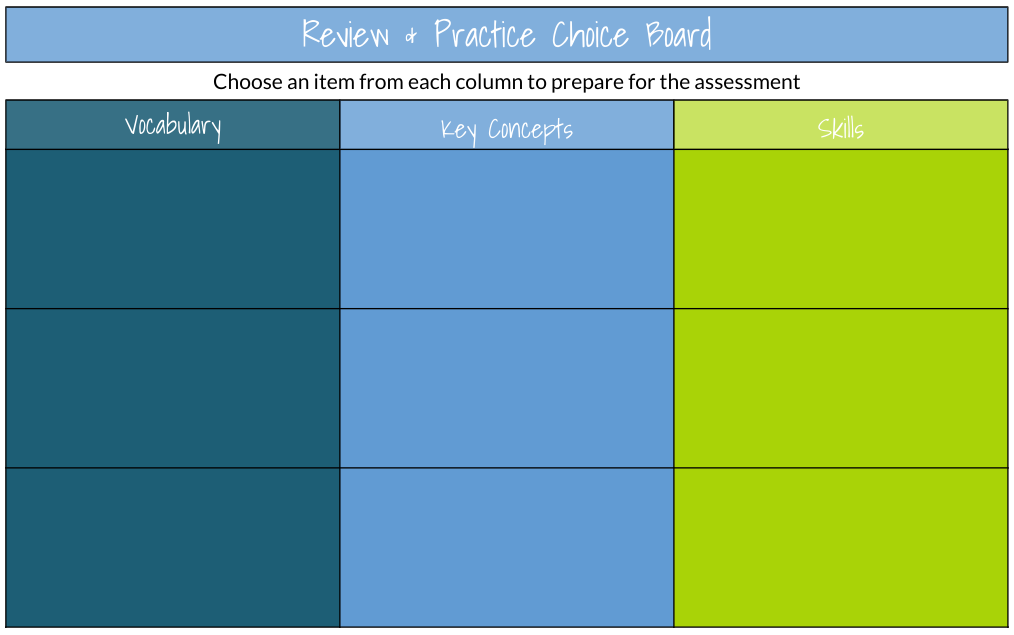While coaching teachers this month, several expressed a desire to include review and practice activities in their station rotation lessons to help students prepare for end-of-the-semester assessments. Helping students review for an exam often takes the form of a study guide or review game. These traditional approaches to review are problematic on three fronts.
- The teacher has to do the lion’s share of the work compiling a list of items to include on the study guide or creating questions for a game.
- A study guide is unlikely to inspire much interest in students, and a single game does not provide enough repeat exposure to vocabulary, concepts, or skills.
- The person generating the study guide and review game is the one doing the critical thinking.
Given that my focus is on designing and facilitating student-centered learning experiences while utilizing blended learning, I suggest that teachers rethink their traditional approaches to helping students prepare for assessments. I see an opportunity to encourage students to do the heavy cognitive lift of designing fun and engaging test preparation materials that teachers can use to help their classes review vocabulary, content, and skills.
Student-created Kahoot! Questions
Teachers who love Kahoot! can encourage their students to design Kahoot! questions that the teacher can use to create a variety of review activities. When students develop the questions, they must think critically about the content they’ve covered and craft questions designed to target essential vocabulary and concepts.
Blended learning tip: This is ideal for a small group collaborative activity as part of a station rotation or whole group rotation lesson. Ask groups of 4-6 students to work together to craft a collection of questions on a digital slide deck, like the one I’ve included below. Then the teacher can review the questions and answers, selecting the best ones to include in future Kahoot! review games.
Hedbanz-style Game
I play Hedbanz with my kids, and they love it (don’t be fooled by that face)! The game’s premise is that each player wears a headband and draws a card with a picture to place in the headband facing the other players. The person with the image on their headband must ask the rest of the players questions to try and figure out what is pictured on their card. The better the questions, the easier it is to guess the correct answer. (Sidenote: It’s super entertaining for anyone looking for a new game to play with the family this holiday season!)
While working with a history teacher this week, she shared how she adapted this game for a review activity in her classroom. I thought it was a brilliant idea! She had her students draw images depicting their vocabulary words on one side of index cards and write the word with its definition on the other side. Her classes created a stack of cards that she then used to engage pairs of students in a Hedbanz-style review game.
Blended learning tip: Ask students to create 3-5 playing cards in an offline station as part of a station rotation lesson. Then students can partner up and play the game during an offline section of a whole group rotation lesson. That way, everyone can play at once and the noise won’t be a distraction.
Student-created Review and Practice Choice Board
Anyone who reads my blog knows that I love a good choice board! A choice board prioritizes student agency, allowing learners to decide which activities to pursue. That is why I like having students design review and practice choice boards for each other as an alternative to the traditional study guide.
Asking students to create a dynamic review and practice choice board for their peers is a cognitively challenging task. They have to think about the learning cycle or unit and identify key vocabulary, concepts, and skills that may be needed to be successful on an assessment. Then they have to design various activities that are likely to appeal to different types of students to ensure their peers have meaningful choices. This is a rigorous task, so I encourage teachers to strategically group students for this activity and give them time to engage with each other to produce a meaningful product.
Blended learning tip:
Dedicate 2 or 3 online stations to this task, depending on the length of the stations and your students’ progress. Once students have collaborated with their group to create a review and practice board, collect them, review the content, and select the strongest boards to use for review and practice. Then you can have the whole class work to complete items on the choice board during a whole group rotation or as part of a playlist. As students work to complete learning activities from the board, pull individual or small groups of students for personalized instruction, support, modeling, etc.
Reviewing information presented in a unit or over the course of a semester is more meaningful if students are actively engaged in the process. It also saves teachers time, and that’s something every educator can appreciate at this time of the year!






No responses yet